Choudhry. Fixed Income Securities Derivatives Handbook
Подождите немного. Документ загружается.


122 Selected Cash and Derivative Instruments
Swaptions
A bank or corporation may buy or sell an option on a swap, known as a
swaption. The buyer of a swaption has the right, but not the obligation, to
transact an interest rate swap during the life of the option. An option on
a swap where the buyer is the fi xed-rate payer is termed a call swaption;
one where the buyer becomes the fl oating-rate payer is a put swaption. The
writer of the swaption becomes the buyer’s counterparty in underlying the
transaction.
Swaptions are similar to forward-start swaps, except that the buyer can
choose not to commence payments on the effective date. A bank may pur-
chase a call swaption if it expects interest rates to rise; it will exercise only
if rates do indeed rise. A company may use swaptions to hedge future in-
terest rate exposures. Say it plans to take out a fi ve-year bank loan in three
months. This transaction will make the company liable for fl oating-rate
interest payments, which are a mismatch for the fi xed-rate income it earns
on the long-term mortgages on its books. To correct this mismatch, the
company intends to transact a swap in which it receives LIBOR and pays
fi xed after getting the loan. To hedge against an unforeseen rise in interest
rates in the meantime, which would increase the swap rate it has to pay, it
may choose to purchase an option, expiring in three months, on a swap in
which it pays a fi xed rate of, say, 10 percent.
If the 5-year swap rate is above 10 percent in three months, after the
company has taken out its loan, it will exercise the swaption. If the rate
is below 10 percent, however, it will transact the swap in the normal way,
and the swaption will expire worthless. The swaption thus enables a com-
pany to hedge against unfavorable movements in interest rates but also to
gain from favorable ones. There is, of course, a cost associated with this
benefi t: the swaption premium.
Valuation
Since a fl oating-rate bond is valued on its principal value at the start of a
swap, a swaption may be viewed as the value on a fi xed-rate bond, with a
strike price that is equal to the face value of the fl oating-rate bond.
Swaptions are typically priced using the Black-Scholes or the Black
pricing model. With a European swaption, the appropriate swap rate on
the expiry date is assumed to be lognormal. The swaption payoff is given
by equation (7.19).
Payoff =−
()
M
F
rr
n
max , 0
(7.19)
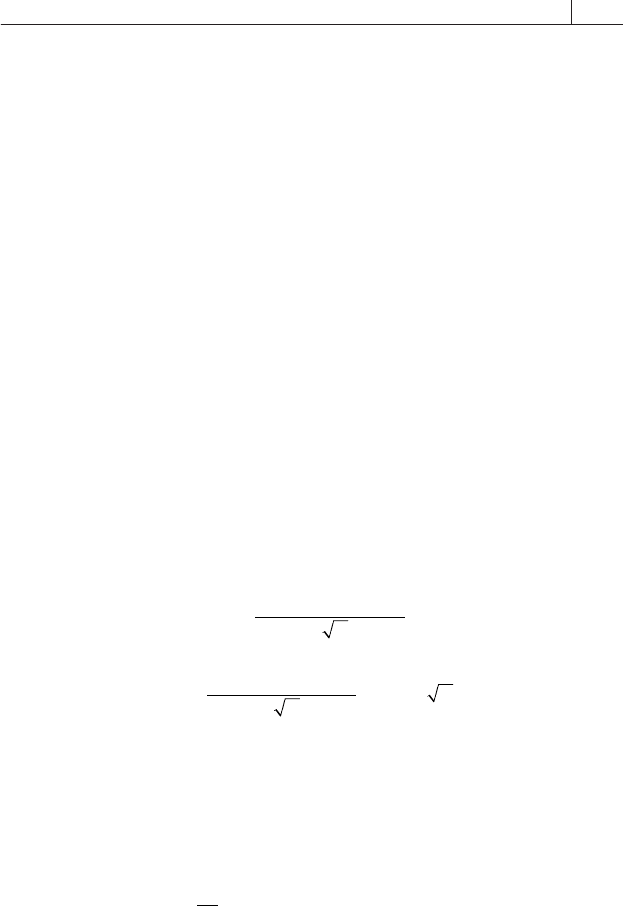
Swaps 123
where
r
n
= the strike swap rate
r = the actual swap rate at expiry
n = the swap’s term
M = the notional principal
F = the swap payment frequency
The Black model uses equation (7.20) to derive the price of an interest
rate option.
cPTfNd XNd=
()
()
−
()
⎡
⎣
⎢
⎤
⎦
⎥
0
01 2
,
(7.20)
where
c = the price of the call option
P (t, T ) = the price at time t of a zero-coupon bond maturing at time T
f = the forward price of the underlying asset with maturity T
f
t
= the forward price at time t
X = the strike price of the option
N = normal distribution
and where
d
fX T
T
1
0
2
2
=
()
+ln / /σ
σ
d
fX T
T
dT
2
0
2
1
2
=
()
−
=−
ln / /σ
σ
σ
and
σ = the volatility of f
Equation (7.20) can be combined with (7.19) to form (7.21), which
derives the value of a swap cash fl ow received at time t
i
.
M
F
PtfNd rNd
in
0
01 2
,
() ()
−
()
⎡
⎣
⎢
⎤
⎦
⎥
(7.21)
where
f
0
= the forward swap rate at time 0
r
i
= the continuously compounded zero-coupon interest rate for an
instrument with maturity t
i
From (7.21), equation (7.22) can be constructed to derive the total
value of the swaption.
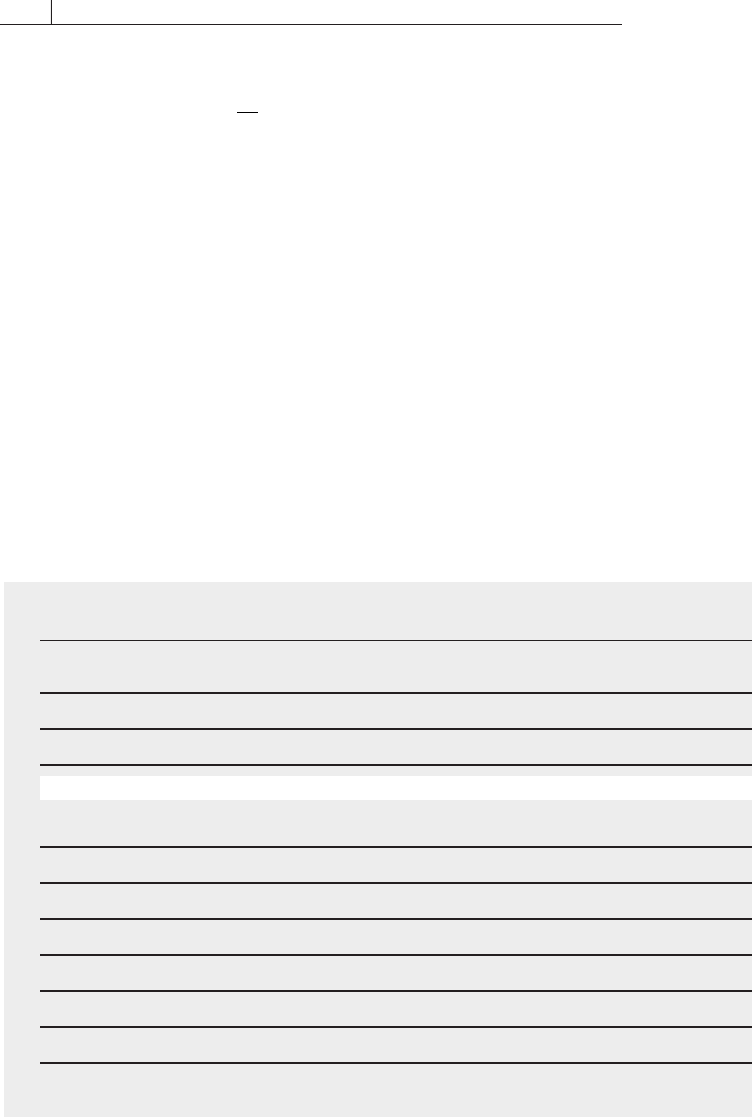
124 Selected Cash and Derivative Instruments
PV
M
F
PtfNd rNd
in
i
Fn
=
() ()
−
()
⎡
⎣
⎢
⎤
⎦
⎥
=
∑
0
01 2
1
,
(7.22)
Interest Rate Swap Applications
This section discusses how swaps are used to hedge bond instruments and
how swap books are themselves hedged.
Corporate and Investor Applications
As noted earlier, swaps can be tailored to suit a user’s requirements. For ex-
ample, swaps’ payment dates, payment frequencies, and LIBOR margins
are often specifi ed to match customers’ underlying exposures. Because the
market is so large, liquid, and competitive, banks are willing to structure
swaps to meet the requirements of virtually all customers, although smaller
customers may have diffi culty obtaining competitive quotes for notional
values below $10 million.
FIGURE 7.6
Excel Formulae for Figure 7.5
CELL C D E F
21 10000000
22
23 PERIOD ZERO-COUPON RATE % DISCOUNT FACTOR FORWARD RATE %
24 1 5.5 0.947867298 5.5
25 2 6 0.88999644 “((E24/E25)-1)*100
26 3 6.25 0.833706493 “((E25/E26)-1)*100
27 4 6.5 0.777323091 “((E26/E27)-1)*100
28 5 7 0.712986179 “((E27/E28)-1)*100
“SUM(E24:E28)
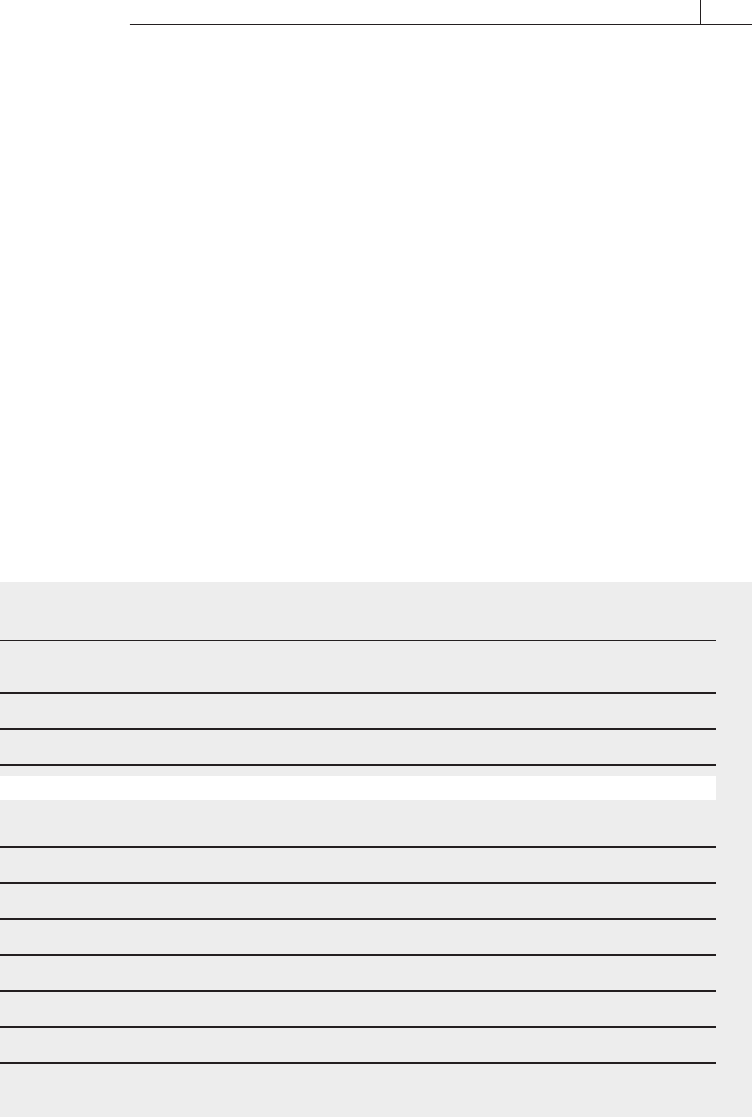
Swaps 125
In terms of their applications, swaps generally fall into two categories:
those linked to assets and those linked to liabilities. An asset-linked swap
is used by investors to change the characteristics of the income stream
generated by an asset, such as a bond. Liability-linked swaps are used by
borrowers to change the pattern of their cash fl ows. Of course, the assign-
ment of a swap to one of these categories depends on the point of view of
the assignor. What is an asset-linked swap for one party is a liability-linked
hedge for the counterparty, except in the case of market-making banks
that make two-way quotes on the instruments.
One straightforward application of an interest rate swap is to convert
a fl oating-rate liability into a fi xed-rate one, usually in an effort to remove
exposure to upward moves in interest rates. Say a company has borrowed
money at a fl oating rate of 100 basis points over 6-month LIBOR. Fear-
ing that interest rates will rise in the three years remaining on the loan, it
enters into a 3-year semiannual interest rate swap with a bank, depicted
in
FIGURE 7.7 on the following page, in which it pays a fi xed rate of 6.75
percent and receives 6-month LIBOR. This fi xes the company’s borrowing
costs for three years at 6.75 percent plus 100 basis points, or 7.75 percent,
for an effective annual rate of 7.99 percent.
G H I J
FIXED PAYMENT FLOATING PAYMENT PV FIXED PAYMENT PV FLOATING PAYMENT
689,625 “(F24*10000000)/100 “G24/1.055 “H24/(1.055)
689,625 “(F25*10000000)/100 “G24/(1.06)^2 “H25/(1.06)^2
689,625 “(F26*10000000)/100 “G24/(1.0625)^3 “H26/(1.0625^3)
689,625 “(F27*10000000)/100 “G24/(1.065)^4 “H27/(1.065)^4
689,625 “(F28*10000000)/100 “G24/(1.07)^5 “H28/(1.07)^5
2,870,137 2,870,137
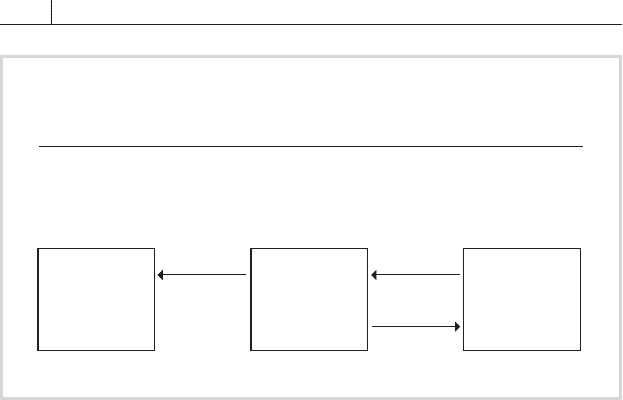
126 Selected Cash and Derivative Instruments
Say a corporation borrows funds for fi ve years at a rate of 6.25
percent. Shortly after taking out the loan, it enters into a swap in
which it pays a fl oating rate of LIBOR and receives 5.85 fi xed (see
FIGURE 7.8). Its net borrowing cost is thus LIBOR plus 40 basis points
(6.25 minus 5.85). After one year, interest rates have fallen, and the
4-year swap rate is quoted at 4.90–84 percent—that is, banks are willing
to receive 4.90 or pay 4.84 fi xed. The company decides to take advantage
of the lower interest rates by switching back to a fi xed-rate liability. To
this end, it enters into a second swap in which it pays 4.90 percent fi xed
and receives LIBOR. Its borrowing cost is now 5.30 percent (4.90 plus
40 basis points), or 95 basis points—the difference between the two swap
rates—below its original borrowing cost.
Investors might use asset-linked swaps if they want fi xed-rate securi-
ties, and the only assets available with the required credit quality and
terms pay fl oating rates. For instance, a pension fund may have invested
in 2-year fl oating-rate gilts, an asset of the highest quality, that pay 5.5
basis points below the London interbank bid rate, or LIBID (the interest
rate at which a bank in the City of London is willing to borrow short
term from another City bank). As it is expecting interest rates to fall,
however, it prefers to receive a fi xed rate. Accordingly, it arranges a tai-
lor-made swap in which it pays LIBID and receives a fi xed rate of 5.50
percent. By entering into this swap, the pension fund creates a structure,
shown on page 128 in
FIGURE 7.9, that generates a fi xed-income stream
of 5.375 percent.
FIGURE 7.7
Transforming a Liability from Fixed Rate to Floating
and Back to Fixed
Two-Swap Structure
LIBOR (L)
6.75%
L + 100bp
Bank Loan Company
Swap
Counterparty
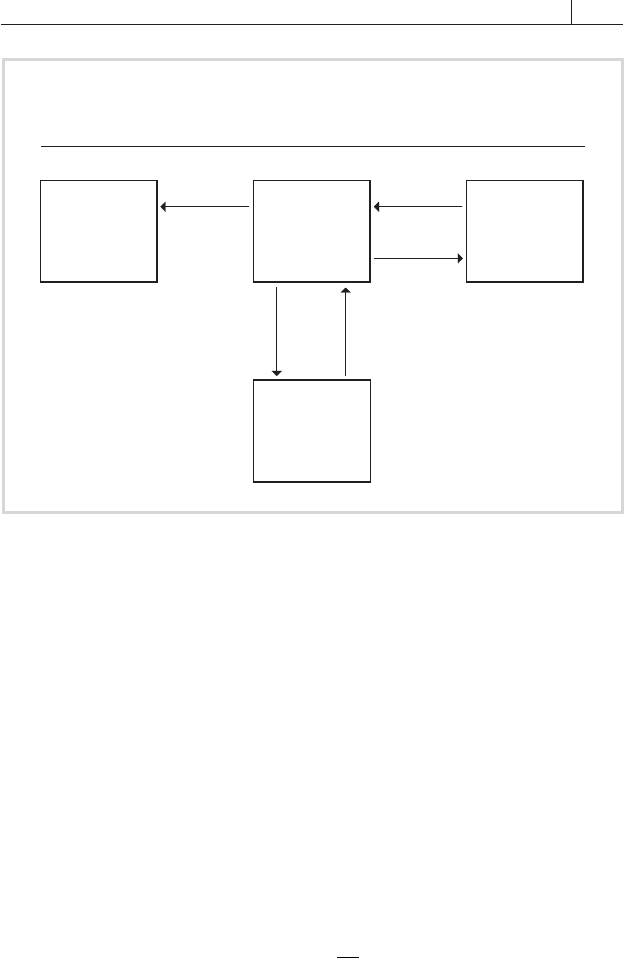
Swaps 127
Hedging Bond Instruments Using Interest Rate Swaps
Bond traders wishing to hedge the interest rate risk of their bond posi-
tions have several tools to choose from, including other bonds, bond fu-
tures, and bond options, as well as swaps. Swaps, however, are particularly
effi cient hedging instruments, because they display positive convexity. As
explained in chapter 2, this means that they increase in value when inter-
est rates fall more than they lose when rates rise by a similar amount—just
as plain vanilla bonds do.
The primary risk measure required when using a swap to hedge is the
present value of a basis point. PVBP, known in the U.S. market as the
dollar value of a basis point, or DVBP, indicates how much a swap’s value
will move for each basis point change in interest rates and is employed to
calculate the hedge ratio. PVBP is derived using equation (7.23).
PVBP
dS
dr
=
(7.23)
where
dS = change in swap value
dr = change in market interest rate, in basis points
It was suggested earlier that a swap be seen as a bundle of cash fl ows
arising from the sale and purchase of two cash-market instruments: a
FIGURE 7.8
Swap Transforming a Floating-Rate Asset to a
Fixed-Rate One
5.85%
LIBOR
6.25%
4.90 LIBOR
Lenders Company
Second Swap
(4-year)
First Swap
(5-year)
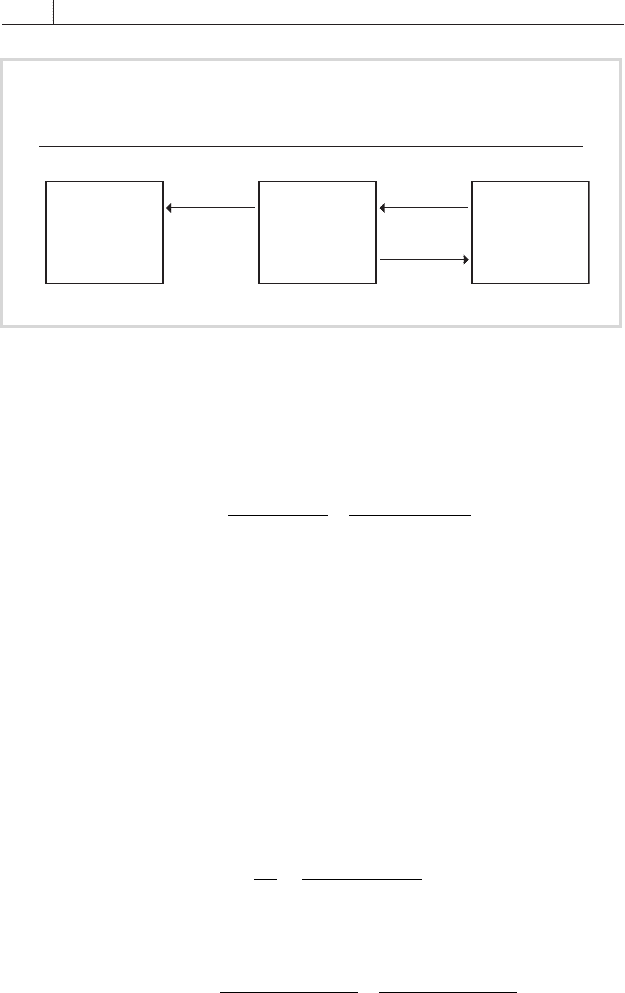
128 Selected Cash and Derivative Instruments
fi xed-rate bond with a coupon equal to the swap rate and a fl oating-rate
bond with the same maturity and paying the same rate as the fl oating
leg of the swap. Considering a swap in this way, equation (7.23) can be
rewritten as (7.24).
PVBP
d
dr
d
dr
=−
Fixed bond Floating bond
(7.24)
Equation (7.24) essentially states that PVBP of the swap equals the
difference between the PVBPs of the fi xed- and fl oating-rate bonds. This
value is usually calculated for a notional principal of $1 million, based on
the duration and modifi ed duration of the bonds (defi ned in chapter 2)
and assuming a parallel shift in the yield curve.
FIGURE 7.10 illustrates how the PVBP of a 5-year swap may be cal-
culated using the relationships expressed in (7.23) and (7.24). The two
derivations are shown in equations (7.25) and (7.26), respectively. (Bonds’
PVBPs can be calculated using Bloomberg’s YA screen or Microsoft Excel’s
MDURATION function.)
PVBP
dS
dr
swap
==
−−
()
=
4264 4236
20
425
(7.25)
PVBP PVBP PVBP
swap fixed floating
=−
=
−
1004940 9951171
20
1000640 999371
20
−
−
= 488.45-63.45
425.00=
(7.26)
FIGURE 7.9
Transforming a Floating-Rate Asset to a
Fixed-Rate One
5.50%
LIBIDLIBID–12.5
Gilt
Local
Authority
2-Year Swap
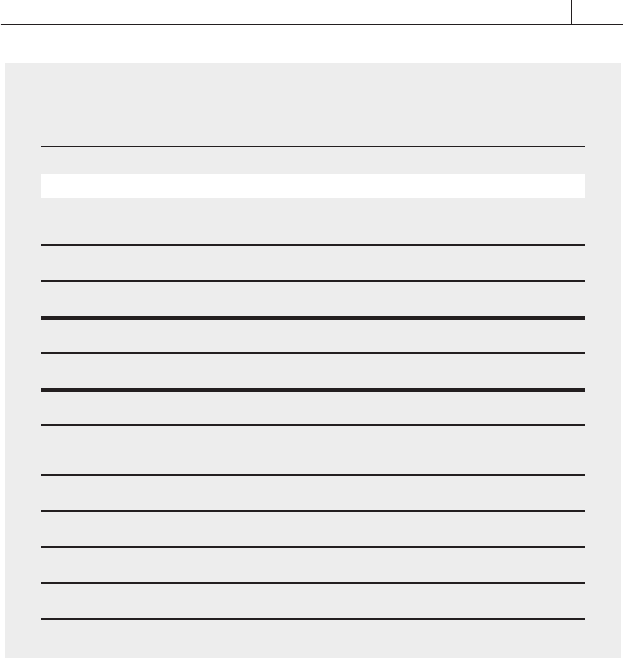
Swaps 129
Note that the swap PVBP, $425, is lower than that of the 5-year fi xed-
coupon bond, which is $488.45. This is because the fl oating-rate bond
PVBP reduces the risk exposure of the swap as a whole by $63.45. As a
rough rule of thumb, the PVBP of a swap is approximately the same as
that of a fi xed-rate bond whose term runs from the swap’s next coupon
reset date through the swap’s termination date. Thus, a 10-year swap mak-
ing semiannual payments has a PVBP close to that of a 9.5-year fi xed-rate
bond, and a swap with 5.5 years to maturity has a PVBP similar to that of
a 5-year bond.
One corollary of the relationship expressed in (7.25) is that swaps’
PVBPs behave differently from those of bonds. Immediately preceding
a reset date, when the PVBP of the fl oating-rate bond corresponding to
the swap’s fl oating leg is essentially nil, a swap’s PVBP is almost identical
to that of the fi xed-rate bond maturing on the same day as the swap. For
example, if it’s a fi ve-year swap, and it’s just before the second semiannual
payment, the PVBP will be similar to that of a four-year bond. Immedi-
ately after the reset date the swap’s PVBP will be nearly identical to that of
FIGURE 7.10
PVBPs of a 5-Year Swap and a Fixed-Rate Bond
with the Same Maturity Date
INTEREST RATE SWAP
Term to maturity 5 years
Fixed leg 6.50%
Basis Semi-annual, act/365
Floating leg 6-month LIBOR
Basis Semi-annual, act/365
Nominal amount $1,000,000
Present value $
Rate change – 10 bps 0 bps Rate change + 10 bps
Fixed-coupon bond 1,004,940 1,000,000 995,171
Floating-rate bond 1,000,640 1,000,000 999,371
Swap 4,264 0 4,236
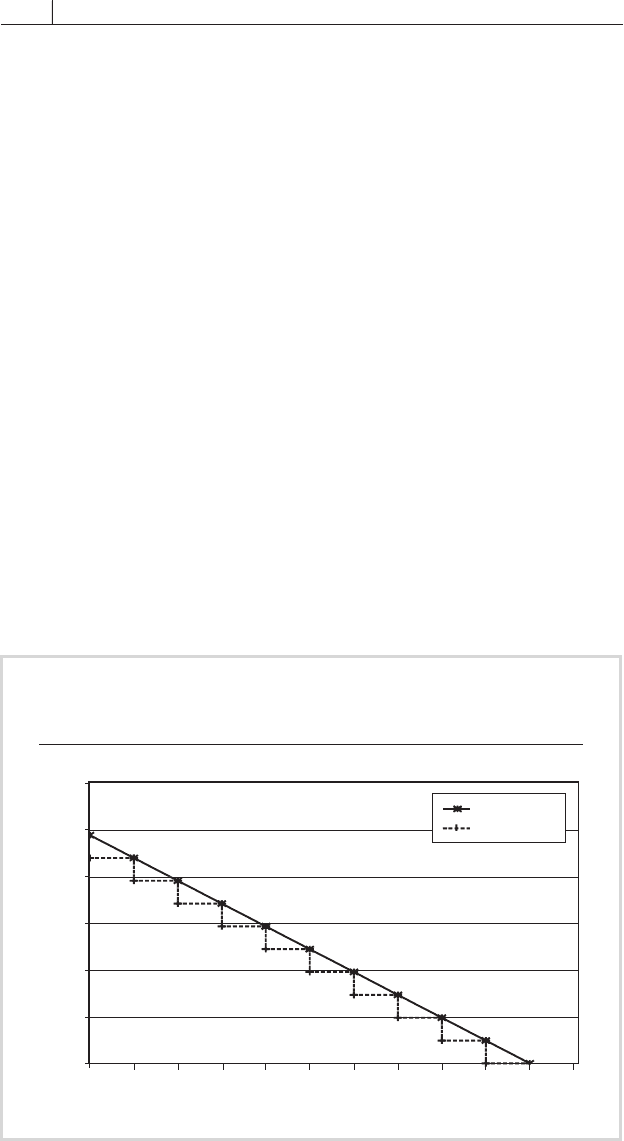
130 Selected Cash and Derivative Instruments
a bond maturing at the next reset date. Therefore, from a point just before
the reset to one just after, the swap’s PVBP will decrease by the amount of
the fl oating-rate PVBP. In between reset dates, the swap’s PVBP is quite
stable, since the effects of changes in the fi xed- and fl oating-rate PVBPs
cancel each other out. In contrast, a fi xed-rate bond’s PVBP decreases
steadily over time, assuming that no sudden large-scale yield movements
occur. The evolution of the swap and bond PVBPs is illustrated in
FIGURE
7.11
. Note that the graph does not refl ect a slight anomaly that occurs in
the swap’s PVBP, which actually increases by a small amount between reset
dates because the fl oating-rate bond’s PVBP decreases at a slightly faster
rate than that of the fi xed-rate bond.
Hedging a bond with an interest rate swap is conceptually similar to
hedging it with another bond or with bond futures. Hedging a long posi-
tion in a vanilla bond requires a long position in the swap—that is, taking
the side that pays fi xed and receives fl oating. Hedging a short position in a
bond requires a short swap position, matching the fi xed swap income with
the pay-fi xed liability of the short bond position.
The swap’s value will change by approximately the same amount, but
in the opposite direction, as the bond’s value. The match will not be exact.
It is very diffi cult to establish a precise hedge for a number of reasons, in-
cluding differences in day count and in maturity, and basis risk. To mini-
mize the mismatch, the swap’s maturity should be as close as possible to
FIGURE 7.11
PVBP of a 5-Year Swap and Fixed-Rate Bond
Maturity Period
0
100
200
300
400
500
600
0 0.5 1.0 1.5 2.0 2.5 3.0 3.5 4.0 4.5 5.0 5.5
Time (years)
PVBP ($)
Fixed-rate bond
Swap

Swaps 131
the bond’s. Since swaps are OTC contracts, it should be possible to match
interest-payment dates as well as maturity dates.
The correct nominal amount of the swap is established using the
PVBP hedge ratio, shown as equation (7.27). Though the market still
uses this method, its assumption of parallel yield-curve shifts can lead to
signifi cant hedging error.
Hedge ratio =
PVBP
PVBP
bond
swap
(7.27)
Chapter Notes
1. The expression also assumes an actual/365 day count. If any other day-count conven-
tion is used, the 1/N factor must be replaced by a fraction whose numerator is the actual
number of days and whose denominator is the appropriate year base.
2. Zero-coupon and forward rates are also related in another way. If the zero-coupon rate
rs
n
and the forward rate rf
i
are transformed to their continuously compounded equivalent
rates, ln(1 + rs
n
) and ln(1 + rf
i
), the result is the following expression, which derives the
continuously compounded zero-coupon rate as the simple average of the continuously
compounded forward rates:
rs
t
rf
F
n
n
i
i
n
=
=
−
∑
1
0
1
